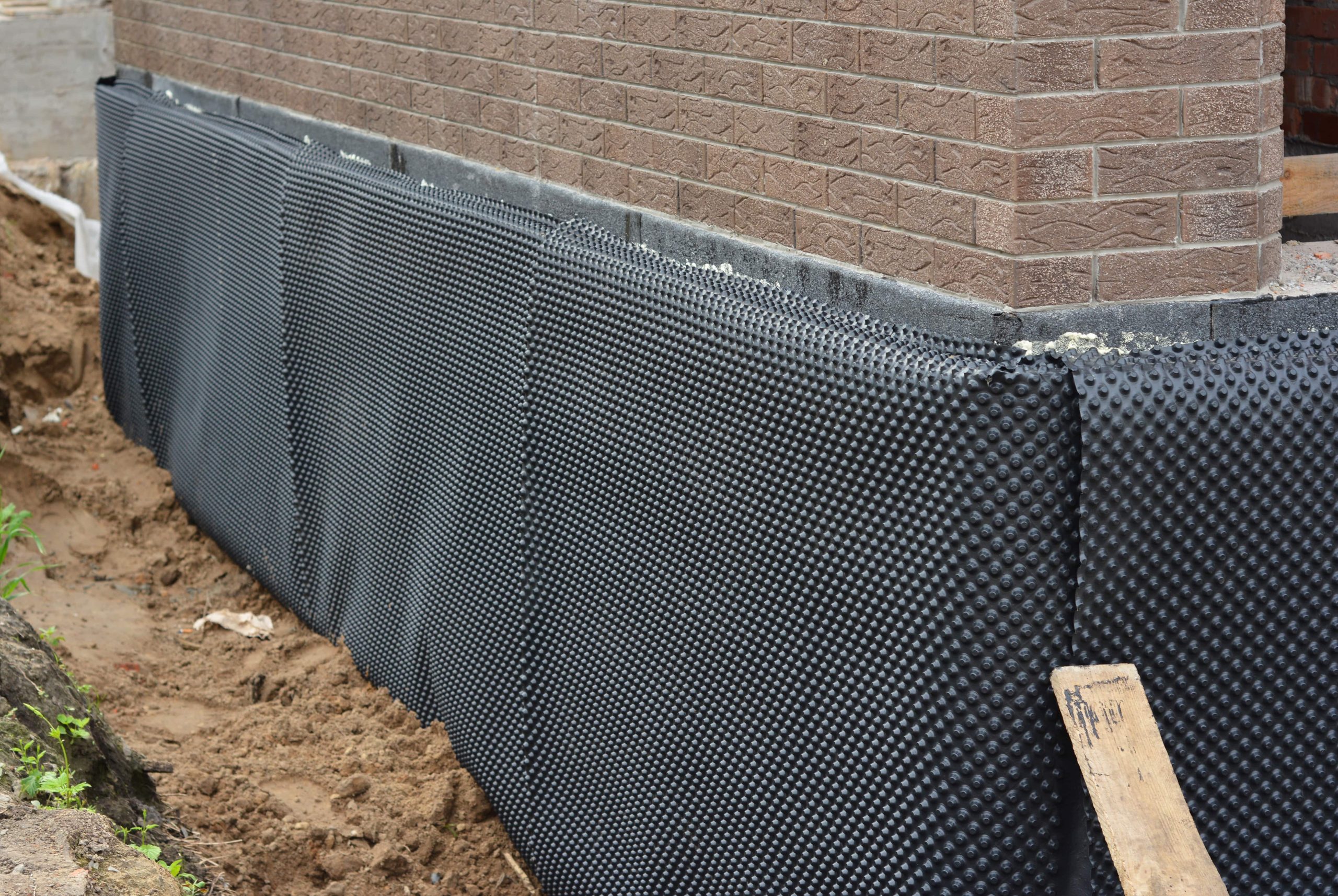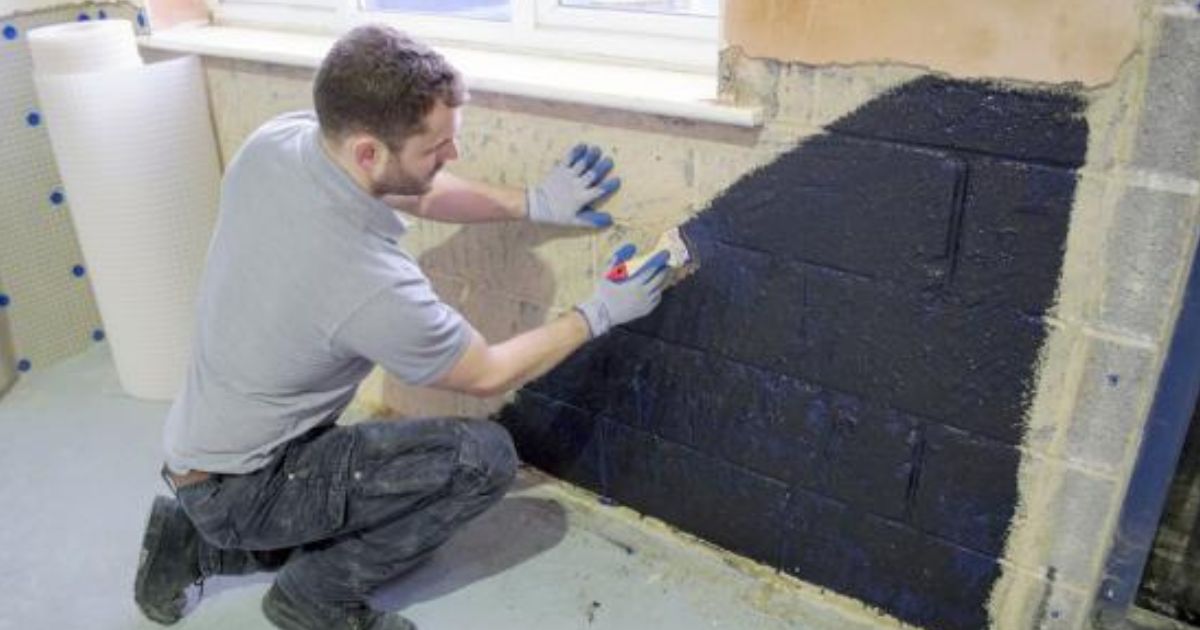Checking Out the Numerous Techniques and Solutions for Effective Damp Proofing
Wetness in structures positions considerable difficulties to both structural stability and indoor air high quality. Different methods and solutions have emerged to battle this pervasive problem. From traditional damp-proof membranes to ingenious chemical treatments, each method provides distinct advantages. Comprehending these choices is important for reliable dampness control. Picking the ideal service depends on particular building problems and requirements, prompting more exploration into the most effective wet proofing strategies offered.
Comprehending the Root Causes Of Wetness
Moisture can arise from different sources, recognizing these reasons is essential for effective removal. Commonly, moisture originates from 3 main resources: increasing damp, penetrating wet, and condensation. Increasing wet happens when groundwater takes a trip upwards through permeable products, such as block or stone, usually as a result of a lack of a reliable obstacle (damp specialist newcastle). Penetrating wet is generally created by outside variables, including roof leakages, damaged rain gutters, or harmed walls, enabling water to penetrate a property. Condensation, on the various other hand, arises from excess moisture in the air, frequently worsened by inadequate ventilation and temperature differences, causing water droplets basing on surface areas. Determining these underlying concerns is essential, as each sort of moisture requires a tailored approach for removal. Appropriate assessment helps in figuring out one of the most effective services, eventually guarding the architectural honesty of a building and enhancing indoor air high quality
Typical Damp-Proof Membrane Layers

Chemical Damp-Proofing Solutions
Chemical damp-proofing remedies offer an innovative approach to avoid moisture intrusion in buildings. These approaches commonly entail the application of fluid chemicals that permeate stonework and develop an obstacle versus increasing damp. Commonly made use of chemicals consist of silanes, siloxanes, and various other water-repellent agents that respond with surface area materials to create a hydrophobic layer.The application procedure generally needs boring holes right into the wall surfaces, injecting the chemical service, and enabling it to cure. This method is particularly useful for older structures where typical damp-proof membranes might be unwise. Chemical damp-proofing can be much less disruptive and extra affordable than extensive restoration projects.While effective, these options depend on proper application and ecological problems for peak performance. damp specialist newcastle. Regular upkeep and tracking are essential to guarantee the durability of the damp-proofing therapy. Overall, chemical damp-proofing represents a versatile option for securing buildings versus moisture-related damage
Cavity Wall Surface Building Techniques
Dental caries wall building methods use countless advantages, particularly in dampness control and energy effectiveness. By including an air gap between two layers of stonework, these walls effectively reduce water access while enhancing insulation. This mix not only shields frameworks from dampness but also contributes to minimized power intake.
Advantages of Dental Caries Wall Surfaces
When thinking about efficient moist proofing methods, the advantages of cavity walls attract attention plainly. Cavity walls consist of 2 different layers, developing an air void that effectively reduces wetness infiltration. This layout minimizes the risk of wetness, as the external wall acts as a barrier against rain and water ingress. Additionally, dental caries wall surfaces enhance thermal insulation, which adds to power efficiency by decreasing warm loss. They additionally provide audio insulation, assisting to develop a quieter interior environment. Additionally, the air void enables for ventilation, which aids in moisture control and reduces the chance of mold and mildew development. These advantages not just enhance the general comfort of a structure but also add to its durability and structural integrity.
Dampness Control Methods
Reliable moisture control approaches are essential in cavity wall building to assure long-term security versus wetness. One primary technique involves the consolidation of weep holes, which facilitate water drainage from the cavity, protecting against accumulation. In addition, the usage of breathable membranes can help handle moisture degrees while enabling entraped vapor to get away. Appropriate positioning of insulation is likewise important, as it should not block water drainage paths. Moreover, making sure that the outer leaves of the tooth cavity wall are built with waterproof products boosts overall durability. Routine maintenance checks are necessary to identify any type of blockages or damage early, protecting the structure's integrity. Ultimately, a mix of these strategies creates a durable defense against dampness breach in tooth cavity wall surfaces.
Insulation and Power Effectiveness
Insulation plays an important duty in boosting power effectiveness within tooth cavity wall construction. By including insulating products, these wall surfaces produce a thermal barrier that decreases warm loss and decreases energy intake. Efficient insulation not only helps preserve a stable interior temperature level however also mitigates the danger of moisture, as it prevents condensation within the wall dental caries. Various strategies, such as the usage of rigid foam boards or mineral woollen, can be utilized to achieve perfect insulation efficiency. Furthermore, correct setup is vital to assure that voids and voids are minimized, which can or else compromise power efficiency. Inevitably, a well-insulated tooth cavity wall surface contributes significantly to total sustainability and reduces heating & cooling costs for homeowners.
Outside Damp Proofing Methods
Outside wet proofing techniques are important for shielding structures from dampness infiltration. 2 efficient methods consist of the application of waterproof membrane layers and the installation of French drains pipes. These solutions assist minimize water build-up and protect the integrity of buildings.
Waterproof Membrane Application
While numerous methods exist for stopping dampness access, the application of water resistant membranes continues to be a very effective external moist proofing method. These membrane layers are generally made from products such as polyethylene, rubber, or modified asphalt, offering a robust obstacle versus water infiltration. The installation process entails applying the membrane to the outside surfaces of foundations or wall surfaces, making certain complete protection to avoid leakages. Appropriate bond and securing at joints are essential to optimizing performance. Water-proof membrane layers can be used in various forms, consisting of fluid layers and sheet membrane layers, enabling adaptability based upon the particular demands of the structure. This technique not only secures buildings from dampness but additionally improves their durability and structural integrity.
French Drain Installation
One effective approach for handling groundwater and preventing dampness accumulation around a structure's structure is the setup of a French drain. This drain system includes a trench full of gravel and a perforated pipe that reroutes surface water far from the foundation. Correct installment needs careful preparation, making sure that the drain inclines away from the framework to assist in suitable water flow. Additionally, the area of the drainpipe is important; it needs to be placed in locations susceptible to pooling or excess dampness. Routine upkeep, including clearing up debris from the crushed rock and guaranteeing the pipeline stays unhampered, is crucial for long-lasting performance. Ultimately, a well-installed French drainpipe can considerably minimize the risk of water-related issues in structures and basements.
Inside Waterproofing Techniques
Inside waterproofing approaches are vital for safeguarding a structure's interior from wetness seepage and potential water damages. These strategies typically include the application of specific materials and methods developed to develop a dampness barrier within the structure. One usual approach is the usage of water resistant layers or sealants on wall surfaces and floorings, which protect against moisture from penetrating surfaces.Additionally, setting up interior drainage systems, such as sump pumps, can effectively manage water accumulation in cellars and creep spaces. An additional technique entails the usage of vapor barriers, which are mounted to hinder wetness motion from the ground right into living spaces.Moreover, dealing with any kind of cracks or spaces in wall surfaces or foundations with appropriate sealants guarantees a detailed defense against water breach. By implementing these interior waterproofing strategies, residential property proprietors can considerably minimize the danger of mold growth, structural damage, and various other moisture-related concerns. Appropriate execution of these methods is important for long-term protection and structure honesty.
Normal Upkeep and Evaluation Practices
Regular maintenance and examination techniques are essential for assuring the long-lasting efficiency of moist proofing services in any type of building. Routine checks make it possible for building proprietors to identify early indicators of dampness breach, such as peeling paint, mold development, and musty odors. These indicators can signify underlying problems that require prompt attention.Inspections must be carried out at least each year, concentrating on vulnerable locations like basements, creep spaces, and outside walls. During these assessments, building owners need to take a look at sealants, water drainage systems, and ventilation to validate they work correctly.Additionally, maintaining downspouts and rain gutters is vital, as stopped up systems can result in water build-up near the structure. Applying a regular upkeep timetable, together with prompt repair services, can substantially prolong the lifespan of wet proofing steps and shield the structural integrity of the building. Proactive procedures ultimately add to the overall wellness and safety of the living atmosphere.
Frequently Asked Concerns
Just How Lengthy Does Damp Proofing Usually Last?
The period of wet proofing effectiveness varies, usually lasting in between 20 to half a century. Variables such as application quality, environmental conditions, and upkeep techniques significantly influence the long life of the damp proofing therapy.

Can I Damp Evidence My Home Myself?
The private contemplated the usefulness of DIY damp proofing. With proper research study and the right materials, it is feasible. They also identified the significance of expert advice to guarantee resilient performance and prevent future issues.
What Are the Indicators of Inadequate Damp Proofing?
Signs of inefficient wet proofing consist of persistent mildewy smells, visible mold and mildew growth, peeling off paint, damp patches on wall surfaces, and wood decay - damp specialist newcastle. Home owners need to deal with these concerns immediately to avoid further damages and wellness concerns
Does Damp Proofing Affect Indoor Air Quality?

Exactly How Much Does Professional Damp Proofing Cost?
Specialist moist proofing prices vary considerably, generally ranging from $1,000 to $5,000 relying on the building's size, the level of the wet issue, and picked methods. Each circumstance calls for a tailored analysis for accurate rates. Commonly, wetness originates from 3 key resources: increasing wet, permeating moist, and condensation. When thinking about effective damp proofing approaches, the advantages of dental caries walls stand out plainly. Exterior wet proofing approaches are crucial for securing frameworks from moisture infiltration. While different techniques exist for protecting against dampness access, the application of water-proof membrane layers stays an extremely efficient exterior moist proofing method. Signs of inadequate moist proofing include consistent mildewy mould treatment newcastle odors, visible mold development, peeling paint, wet spots on wall surfaces, and wood degeneration.